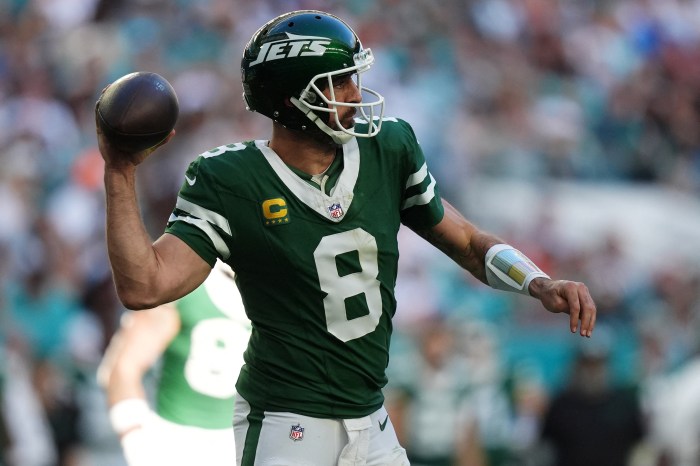By Joan Brown Wettingfeld
In 1624, 30 Dutch and Walloon families settled in New Netherlands, a territory spanning an area extending from the Delaware River to the Connecticut River. By 1625, the first permanent settlement was made in New Amsterdam, what was later called Manhattan. However, in 1664 the British captured the settlement without a fight and renamed it New York after James, Duke of York, brother of King Charles II. Thomas Willet, whose family is closely tied to the history of Queens, was appointed the first mayor of New York, albeit under English rule. In 1683, again without a real fight, the Dutch recaptured New York and renamed it New Orange. However, in 1674, New York became English again under the Treaty of Westminister, a name which survived the defeat of the British in the American Revolution and remained down through the centuries.
It is to Washington Irving that we owe the legacy of nicknames for our city. While viewing the impressive citadel the Alhambra in Granada, during a recent visit to Spain, I was reminded of this legacy that Irving left to New York City , the place of his birth.
In 1826 Irving was attached to the American embassy in Madrid, and while there was active in calling attention to the dilapidated state of the once mighty stronghold of the Moors who had dominated the area until 1492. After the Moors were expelled from Spain, the buildings of the famed fortress originally built between 1248 and 1354, fell into disrepair. Washington Irving is credited with being instrumental in preserving the history of what has become one of the world’s premier monuments. Restoration began in 1828. In 1832 the publication of Irving’s “Tales of the Alhambra” further enhanced the popularity of the site.
But let’s get back to our story. How was it that Washington Irving, the son of a wealthy British merchant, sympathetic to the rebel cause in the American Revolution, came to leave our city a heritage of two enduring “nicknames?”
In 1809, Irving, who had been trained as a lawyer, became more interested in a literary career and wrote a satire called, “A History of New York from the Beginning of the World to the End of the Dutch Dynasty.” Using a pseudonym, he presented the work as that of a fictional historian, Diedrich Knickerbocker. Though the writing was friendly in tone, it was really a burlesque of the life style of the early Dutch settlers in New York. Descriptions abounded of Dutchmen dressed in baggy britches, which came in our day to be known as knickers.
The popularity of Irving’s work endured, and by the mid 1800’s the word knickerbocker became synonymous with any native or resident of New York, Dutch or not. The practice began of attaching knickerbocker to anything dealing with New York and survives to this day, for example, in the name of New York City’s basketball team, though it is shortened to “Knicks.”
Irving probably chose Knickerbocker because it was a distinguished name with a proud history, for the family had been well regarded in the Hudson Valley since the 16th century.
“The History of New York” is regarded today as the first great book of comic literature written in America. Washington Irving went on, through his numerous essays and books, to become the first American to be recognized abroad as a man of letters.
New Yorkers also owe to Irving one of our most frequently applied nicknames, “Gotham.” In 1807 and 1808 he and his brother, William, published a humor periodical known as “Salmagundi.” In one issue the name Gotham was given to New York. Gotham had a long history as the proverbial place of fools, and thus Irving dubbed his beloved city as one populated by fools.
Since 1970 another nickname has eclipsed Gotham in popularity. The term “The Big Apple” has a more uncertain history than Irving’s legacy. The head of the New York Convention and Visitors’ Bureau adopted the phrase as part of his promotion to have the city known as The Big Apple. Though he was not the one to coin the phrase, he was responsible for popularizing it.
In a 1967 article in The New York Times, John S. Wilson noted that New York had for decades been thought of as the The Big Apple or “The Big Time” by jazz musicians. To them Big Apple was synonymous with Big Time, a vaudeville term.
In the 1930’s Cab Calloway is reported to have said that apple means “the big town, the main stem, Harlem as the place for musicians, the place for musicians to strive for,” according to Robert S. Gold of “Jazz Talk.”
Some, as I do, will recall the dance craze which enlivened our high school days called, “The Big Apple,” a dance which reportedly began in South Carolina and migrated North.
A 1938 sports article in the New York Times Magazine mentions that jockeys also referred to New York racetracks as “The Big Apple.” Today this latest New York nickname survives, as do Knickerbocker and Gotham, which found their way into our vocabulary through the literary satires by a native of New York City.
Out of curiosity I looked up the history of a suburb in New Jersey where I lived when I was 4 years old. Formerly Camptown, it was renamed Irvington in honor of Washington Irving in 1852.


































